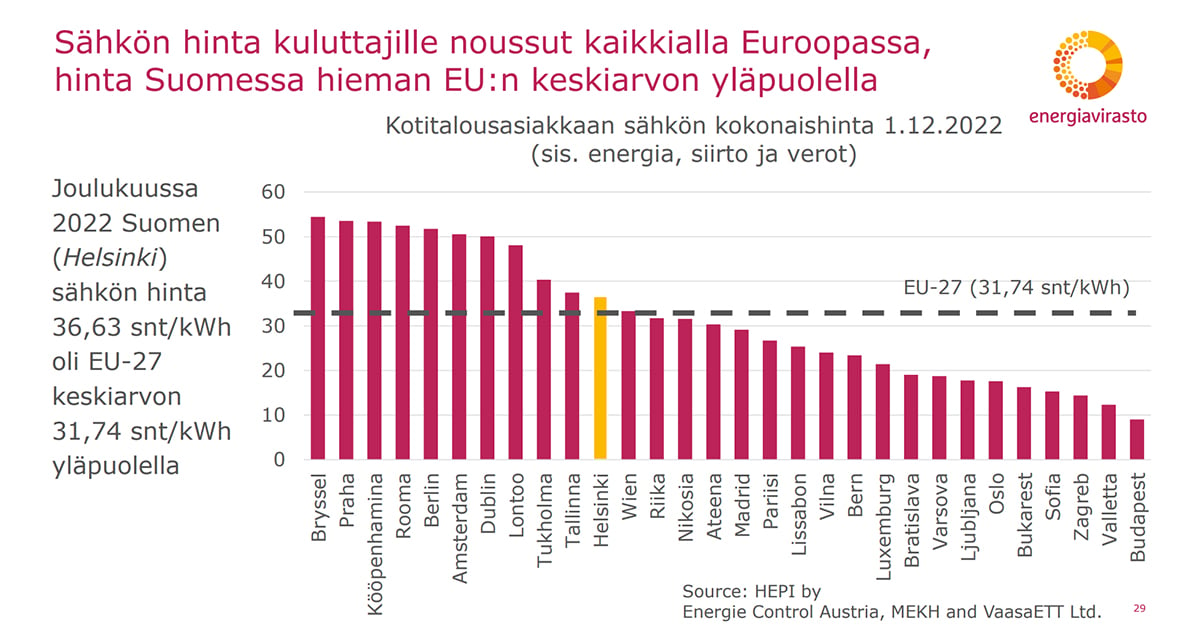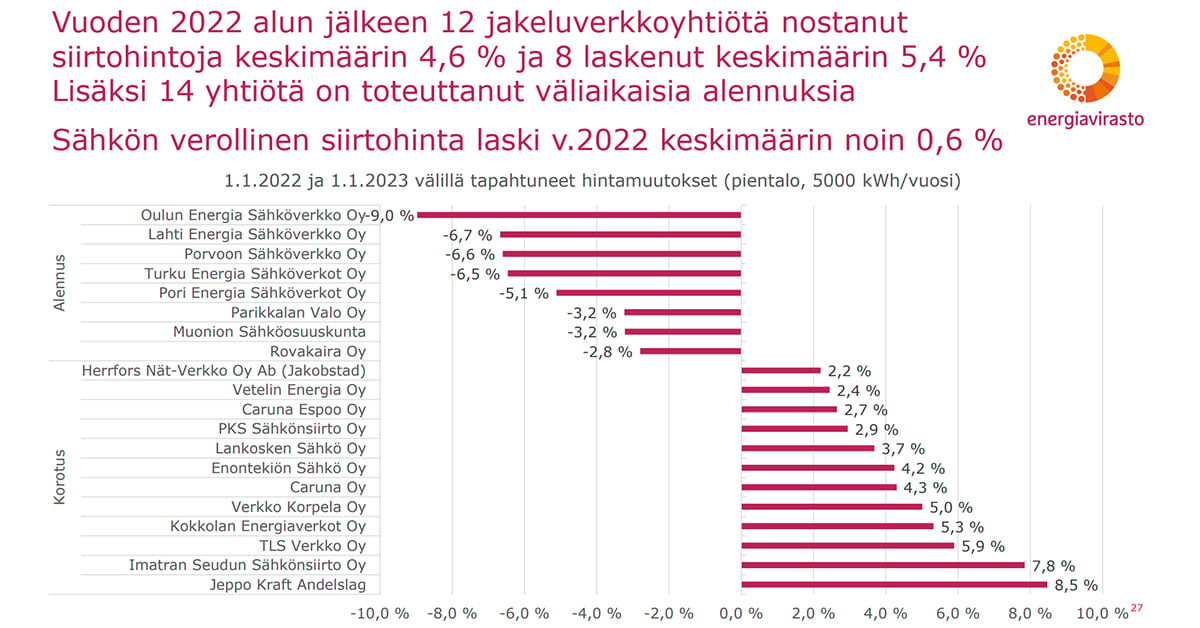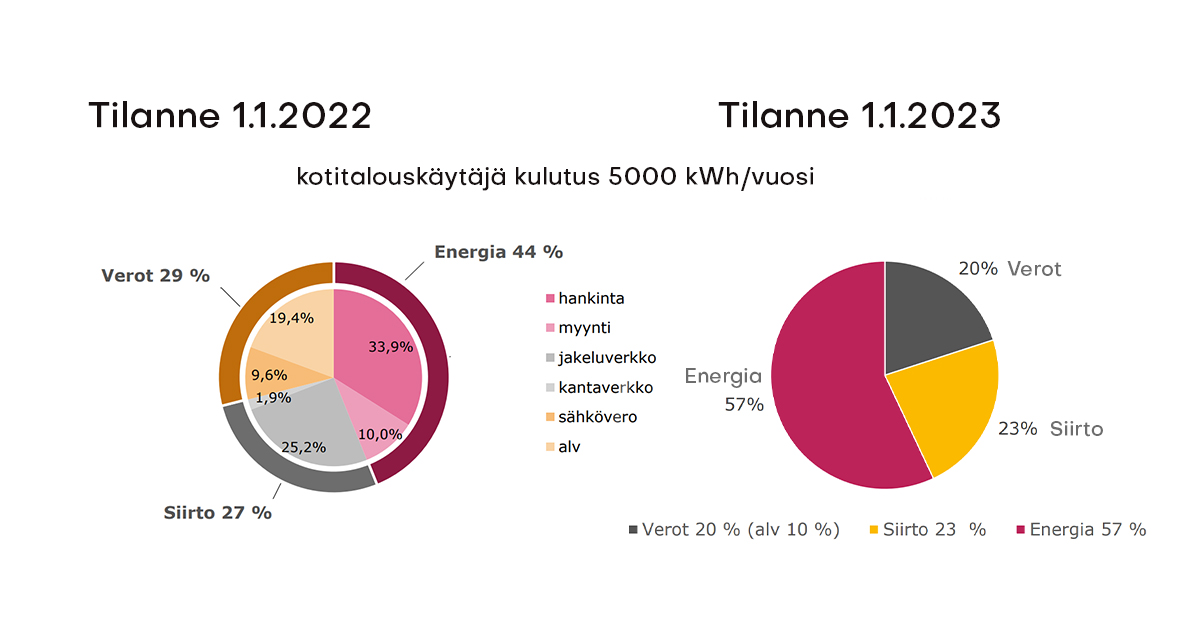6+2 facts about the electricity market – an overview of 2022 and expectations for the rest of 2023
Electricity and electricity markets have been subject to a lot of interest over the last two years, and unsurprisingly, as the long stable electricity markets began to fluctuate during 2021. This was reflected in the high price of electricity, which was caused by, among other things, increased natural gas prices and low hydropower production. 2022 saw the first potential electricity shortage in decades. This was mainly due to the unstable global situation, which altered the import of electricity from abroad in an unexpected way.
However, now that we are at the beginning of April, we can already cautiously state that the worst is behind us. At this stage, it is good to look back and, at the same time, to anticipate the future. We have therefore compiled a list of six important facts that help to give a simplified picture of the complex electricity market situation in 2022. We also anticipate how the electricity market and electricity prices will look for the rest of the year.
1. Net imports of electricity decreased
Net imports of electricity decreased throughout Europe, as the import of Russian electricity was completely halted in May 2022. The share of net imports of electricity fell in Finland by nearly 30% (5.3 TWh) from the previous year. The decrease in imports meant that the amount of electricity had to be replaced with either other imports, produced ourselves, or conserved by reducing consumption. This is also why electricity produced elsewhere in Europe was increasingly consumed in its country of production.
2. Wholesale electricity prices doubled
The sharp rise in electricity prices is evident by the fact that wholesale electricity prices in Finland more than doubled from the previous year, costing EUR 154/MWh. However, Finland’s average price was not the highest in Europe. The highest regional price was in Germany at EUR 235.45/MWh, followed by Norway and Estonia, slightly over EUR 192/MWh in both.
For the consumer, the increase in wholesale prices was reflected as a higher electricity price, which was slightly higher in Finland in comparison with the average price level in Europe, 36.63 c/kWh compared to the European average of 31.74 c/kWh. Belgian and Czech consumers paid the highest price for electricity last year, increasing to nearly 55 c/kWh.

3. Electricity bills for household customers increased by an average of 50%
The price of electricity paid by household customers increased significantly after the summer. The old fixed-term contracts, previously at 6–8 s/kWh, increased to around 12–20 c/kWh. The reason for this increase was the increase in acquisition costs for electricity, which was reflected in the contracts the electricity suppliers offered their customers.
The prices of fixed-term contracts have decreased in early 2023, partly due to the decrease in wholesale electricity prices.
4. Several electricity retailers experienced difficulties
Electricity suppliers also had to reduce their supply during 2022 because of difficulties in predicting the price of electricity. Several suppliers were only offering an exchange electricity contract at the end of the year. Five retail electricity providers went out of business in 2021–2022 due to, among other things, the exceptionally high risks in the electricity market and the extreme margin requirements.
5. The price of electricity transmission, i.e., network service, decreased throughout Finland
Although the price of electricity increased dramatically over the last two years, the taxable transmission price of electricity decreased by about one per cent in all of Finland. Oulun Energia Sähköverkko Oy’s customer prices decreased by an average of as much as 13.5%, which was the biggest price reduction for electricity network distributors in 2022. The price could be reduced in Oulu as the security of the electricity network is at a high level and the operation of the electricity network has been efficient. Energy Authority oversees the affordability of electricity transmission prices.
Oulun Energia Sähköverkko Oy is now among the ten most affordable electricity network distributors nationwide when examining the figures in small consumer user groups. All 77 domestic electricity network distributors are included in the comparison.

6. Changes in the formation of electricity prices
The distribution of electricity prices changed between 2022 and 2023. For the consumer, the share of taxes decreased from 29% to 20%. The share of electricity transmission, i.e., network service, decreased from 27% to 23%, and the share of electric energy increased from 44% to 57%. In addition, VAT on electricity was reduced from 24% to 10% from 1 December 2022 to 30 April 2023.

Source: Statistics Finland, Energy prices 2022–2023.
+1. 2023 outlook for electricity production in Finland
Growth is expected in domestic electricity production in the coming year due to, for example, the commissioning of Olkiluoto 3 and increased investments in renewable energy, especially wind and solar energy. In 2022, the new wind power capacity increased by 2,400 MW and at the same time, electricity produced with wind energy reached its own production record in Finland: 11 TWh.
Oulun Energia’s wind energy production will also increase with the Lestijärvi wind farm, due to be completed in 2025. The annual electricity production of the Lestijärvi wind farm is estimated to be approximately 1,300 GWh. Oulun Energia’s share of this is one quarter, or about 320 GWh.
+2. What will the price of electricity and the electricity market look like next winter?
The commercial use of Olkiluoto 3 begins in April. During the spring and early summer, Finland’s hydropower production is at its most abundant, meaning that there is a high likelihood that Finland’s regional price will be inexpensive at that time. Meanwhile, the annual maintenance of heating plants and low wind power production during the end of summer and autumn support Finland’s regional price, and the price is likely to increase somewhat. Next autumn and winter are expected to be normal and price predictions are considerably lower than last year’s prices were.
Learn more from Energy Authority’s report (in Finnish only).



